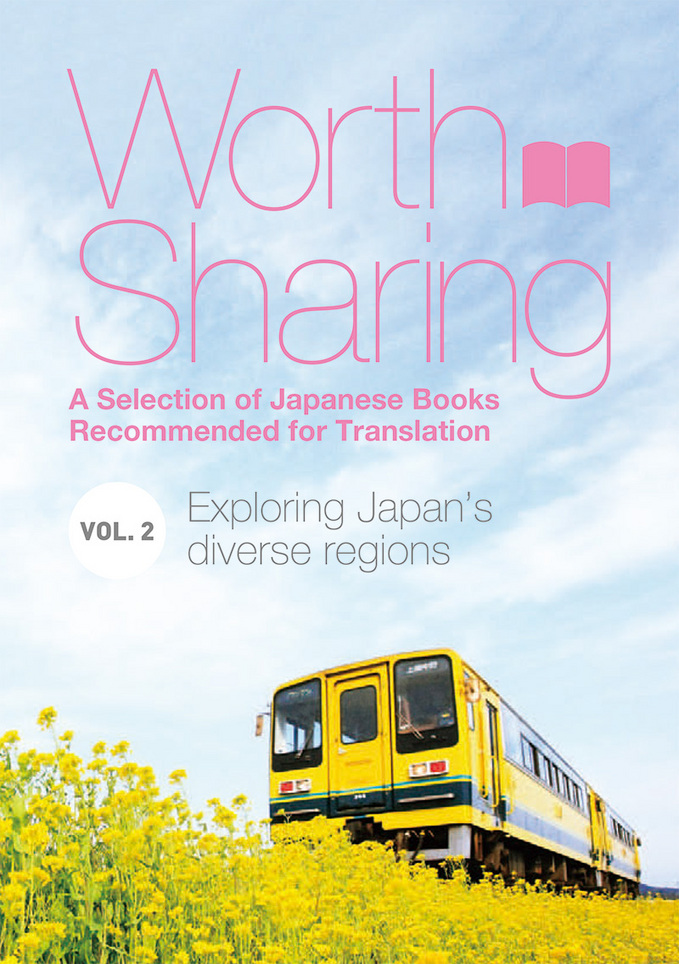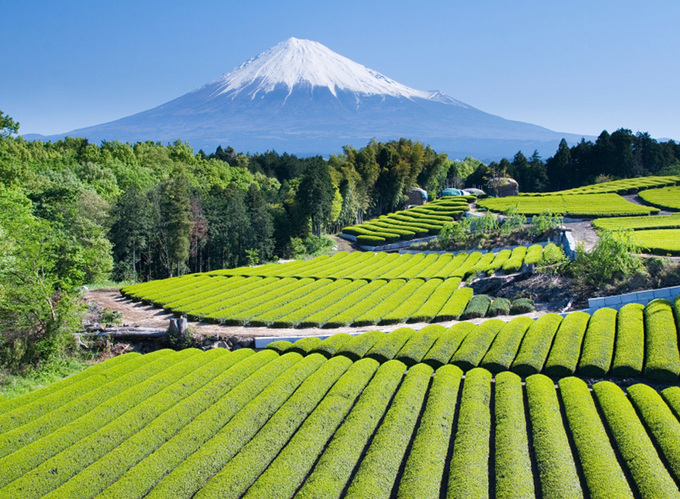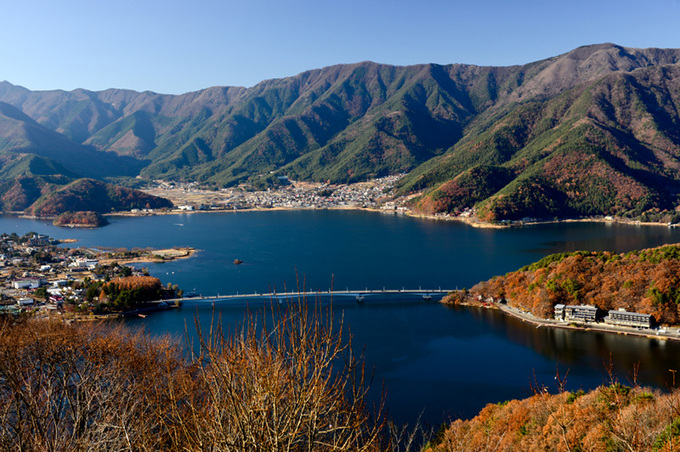Various Landscapes in Japan's Regions
Chō Kyō (Zhang Jing)
Professor, Meiji University
For more than 30 years, the Japan Foundation has supported the publication of Japan-related
books around the world through its Support Program for Translation and Publication on Japan. Books in over 50 languages have been published during that time, in a wide array of genres including classic and contemporary literature, history, sociology, politics, economics, and cultural theory. The booklet "Worth Sharing - A Selection of Japanese Books Recommended for Translation" introduces a new initiative aimed at giving people overseas a better understanding of contemporary Japan. Following the first volume titled "Shedding light on Japan's youth," the second volume of "Exploring Japan's diverse regions" selects 18 titles of contemporary fiction and 2 works of nonfiction that depict various landscapes in Japan around the theme of regions and localities. A member of the selection committee, Professor Chō Kyō, shares his thoughts on the publication.

In Japan, Tokyo is the "center," and everything else is a "region." Since the high-speed economic growth of the 1950s and 1960s, Tokyo has pulled everything from the regions toward itself like a giant magnet. The overconcentration is not limited to industry. Politics and culture are also consolidated around Tokyo. In this historical and social context, the regions in literature used to have a doubly symbolic meaning. While they brought to mind things like history and tradition or nature and a simpler way of life, they also were talked about in terms of conventions and stagnation; or a narrow-minded love for one's hometown; or impoverished local communities. If regions are a metaphor for resistance to urbanization, breaking free from one's native place implies an escape from provincialism.
When Japan entered the postindustrial age, population movements stabilized and urbanization progressed in regions as well. To varying degrees, the schema of center vs. periphery is being reproduced even on the regional level. The nostalgic myth of regions as utopian places to live has already been shattered. Remote regions and mountainous areas have gone past impoverishment and are now being depopulated, which makes it harder for them to become romanticized objects.



Today, works of literature set in regions do not necessarily suggest an ideal living space in opposition to Tokyo. On the contrary, they are often mentioned as settings for increasingly diverse ways of life. "Regional literature," defined as works written only in regions and read only by local readers, no longer exists. When speaking about regional literature in certain areas, the main criterion is the author's birthplace, but that kind of classification has almost no literary meaning.
We selected the works for this list with those kinds of cultural circumstances in mind. The works were chosen from a relatively wide period of time. The choice of works was based on their content, not where the authors are from. Some novels depict local lifestyles, while others take a certain region as their backdrop. One is a parody of regional studies; others express the charm of local dialects through literary refinement. One of the works covers local history, and still other titles on the list address the problems faced by Japan's regions.
Among the 20 works chosen, 18 of them are novels. Most of them are from the past 10 years, but they include one first published in 1968 and three published during the 1980s. For the most part, they have not been translated into any foreign language. They are all works that stand the test of time, with highly original ideas and styles or ways of writing. In addition to novels, we also chose an excellent work of nonfiction and a book that examines regions from an ethnographic viewpoint. Of course, it is impossible to cover all the outstanding works in Japan in such a limited space. As a selector, I would be thrilled if this list can give overseas readers a taste of the many regions that have appeared in contemporary Japanese literature.
(Reprinted from "Worth Sharing--A Selection of Japanese Books Recommended for Translation" published in July 2013)
 Chō Kyō (Zhang Jing)
Chō Kyō (Zhang Jing)
Chō Kyō (Zhang Jing) was born in 1953 in Shanghai, China. After graduating from East China Normal University, Chō became an assistant at the University. He then came to study in Japan and obtained a Ph.D. from the Department of Comparative Literature and Culture, Graduate School of Arts and Sciences at The University of Tokyo. He previously worked as an assistant professor at Tohoku University of Art and Design and Kokugakuin University and also served as a visiting fellow at Harvard University. Currently, he is a professor in the School of Global Japanese Studies at Meiji University (comparative culture), and his research themes are Taisho literature and China, translation and acceptance of literature, cultural historical studies of sensibilities and emotions. He won the 1993 Yomiuri Prize for Koi no chugoku bunmeishi (Love in the history of Chinese civilization) and the 1995 Suntory Prize for Social Sciences and Humanities for Kindai chugoku to "renai" no hakken (Modern China and discoveries of "love"). His recent publications include Umi wo koeru nihon bungaku (Crossing the Border: A New Aspect of Modern Japanese Literature) and Cho kyo no nihon bungaku shindan (Cho Kyo's assessment of Japanese literature).
"Worth Sharing ―A Selection of Japanese Books Recommended for Translation"
List of titles introduced in "Worth Sharing - A Selection of Japanese Books Recommended for Translation, Vol. 2 Exploring Japan's diverse regions"
Shizumu Furanshisu (Sinking Francis) by Matsuie Masashi
Kaitan-shi jokei (Sketches of Kaitan City) by Satō Yasushi
Tōhokugaku: Wasurerareta Tōhoku (Tōhoku Studies: The Forgotten Tōhoku) by Akasaka Norio
Kirikiri-jin (The People of Kirikiri) by Inoue Hisashi
Umatachi yo, sore demo hikari wa muku de (O Horses! At Least the Light Remains Pure) by Furukawa Hideo
Hikari no yama (Mountain of Light) by Gen'yū Sōkyū
Soba to kishimen (Soba vs. Kishimen Noodles) by Shimizu Yoshinori
Miru (Water Weed) by Inaba Mayumi
Aru ichinichi (One Day) by Ishii Shinji
Kokuhaku (Confession) by Machida Kō
Gaikotsu biru no niwa (The Garden of the Skeleton Building) by Miyamoto Teru
Konnyakuya hyōryūki (Adrift: Wanders in Search of the Konnyakuya) by Hoshino Hiromi
Akakuchiba-ke no densetsu (The Legend of the Akakuchiba Family) by Sakuraba Kazuki
Tomogui (Cannibalism) by Tanaka Shin'ya
Basho (Places) by Setouchi Jakuchō
Shimanto-gawa Dai 1 bu: Atsuyoshi no natsu (The Shimanto River, Part 1: Atsuyoshi's Summer) by Sasayama Kyūzō
Bakushin (Ground Zero) by Seirai Yūichi
Shishiwatari-bana (Lion's Tread Point) by Ono Masatsugu
Shōsetsu Ryūkyū shobun (The Ryukyu Disposition: A Novel) by Ōshiro Tatsuhiro
Mabuigumi (Spirit Stuffing) by Medoruma Shun
Back Issues
- 2025.6.24 Exclusive Interview:…
- 2025.5. 1 Ukrainian-Japanese I…
- 2024.11. 1 Placed together, we …
- 2024.5.24 The 50th Japan Found…
- 2024.5.24 The 50th Japan Found…
- 2024.5. 2 People-to-People Exc…
- 2024.2.19 Movie Theaters aroun…
- 2024.2.19 Movie Theaters aroun…
- 2023.4.24 The 49th Japan Found…
- 2022.10.24 Inner Diversity <2> …

